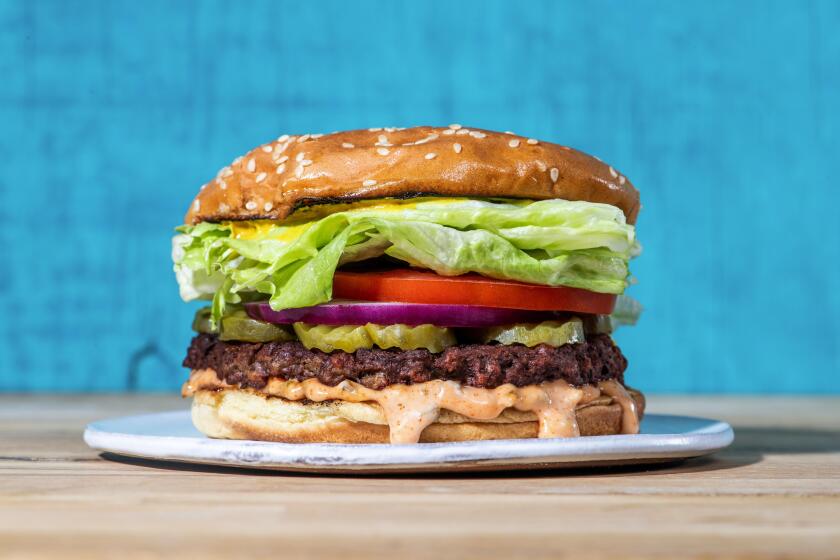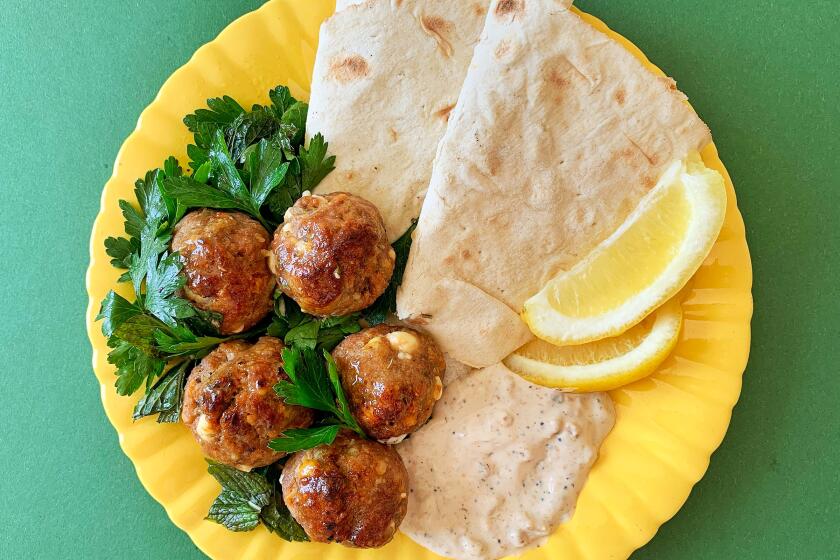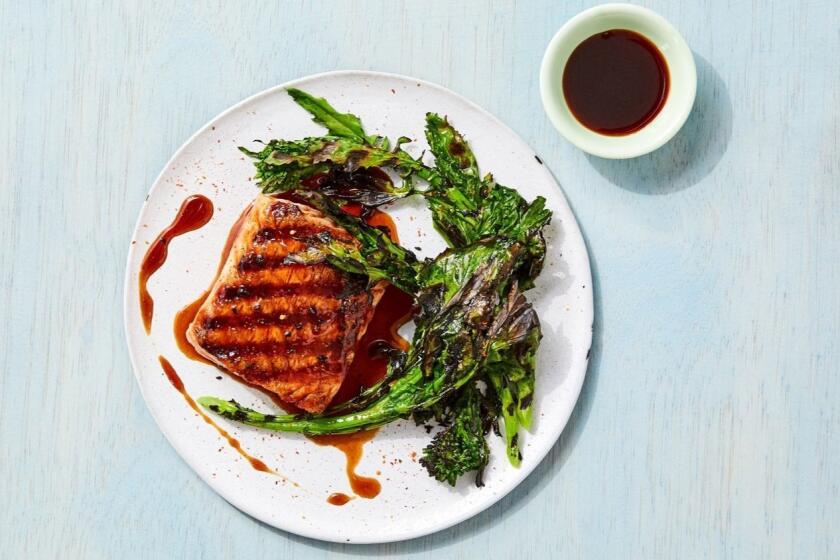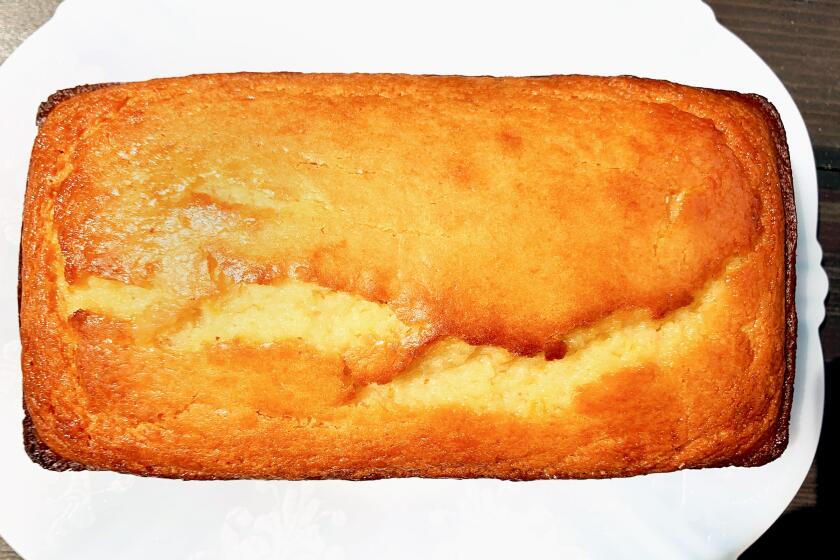Grill everything this Memorial Day, even dessert
- Share via
The usual Memorial Day cookouts are on hold, but we’re still going to grill, even if it’s just for ourselves and our small quarantine squad.
Get our Cooking newsletter
Get a taste of Los Angeles — and the world — with recipes and kitchen tricks from the L.A. Times’ Cooking newsletter.
You may occasionally receive promotional content from the Los Angeles Times.
And we’ve got you covered with baking too, so you have something sweet to eat after all those burgers.
Impossible Burger With Spicy Special Sauce
This plant-based burger, stacked with all the fixings and dripping with rich, spicy sauce, tastes better than the real thing.
Caramelized Lemon and Feta Turkey Meatballs
Stuffing these savory meatballs into pita is a great twist on the traditional burger.
Grilled Salmon Teriyaki
Teriyaki sauce caramelizes onto charred salmon, making the fish extra flavorful. Throw broccoli rabe or any other sturdy greens over the fire too.
Orange Blossom Yogurt Lemon Loaf
Top slices of this lemony cake with whipped cream and berries for a festive dessert. Better yet, give a thick slab a turn on the grill for a smoky-sweet treat.
Grilled Nutella and pecan pound cake 'sandwiches'
For another take on grilled cake, go with this one fully loaded with Nutella and topped with ice cream.
Ask the cooks
Is there a baking rule of thumb for leaveners? Can I use baking soda or baking powder, or do I need to use both?
— Glenn Shadrake
Baking soda and powder are chemical leaveners that help baked goods rise by creating air in them. Baking soda is alkaline, so it’s generally used with acidic mixes and baking powder works with any blend. In fact, you can make the equivalent of a teaspoon of baking powder by whisking 1/4 teaspoon baking soda with 1/2 teaspoon cream of tartar, which is a powdered acid.
Whether you use one or the other or both is more than just matching acid with alkaline, and the amounts and ratios depend on each recipe. To understand when to use which, you need to know how they work. Remember what baking soda did in your school science volcano project? When it combines with liquid and acid, it bubbles up like crazy. The same is true when it’s in batters and doughs with buttermilk, yogurt, citrus juice, vinegar and even coffee. It works fast, so it’s ideal in quick-cooking muffins and biscuits. It also browns baked goods nicely, weakens gluten for tender textures, and helps cookie dough spread.
When alkaline baking soda meets acidic ingredients, it neutralizes them, so it’s not great for sweets where you want to taste the tang of lemon or buttermilk. Plus, too much baking soda can give your baked goods a tinny taste and make your tongue feel weird. To take advantage of its quick-rising and browning powers without meeting its downfalls, it’s usually combined with baking powder.
Like baking soda, baking powder starts to create gas bubbles as soon as it hits liquid, acidic or not. But it then continues to work once it’s heated in the oven. That’s why your bottle is labeled “double-acting baking powder.” Its slower rise is ideal for quick bread loaves, cakes and anything else that bakes for a while.
The proportions of baking soda and powder are tailored to the rest of the ingredients for the ideal rise, so it’s best to stick with trusted recipe sources and to use the amounts listed. Too much or too little means overflowing cake batter or cratered muffins. Buy one of each and you’ll get surefire results every time.
Have a cooking question?
Eat your way across L.A.
Get our weekly Tasting Notes newsletter for reviews, news and more.
You may occasionally receive promotional content from the Los Angeles Times.









